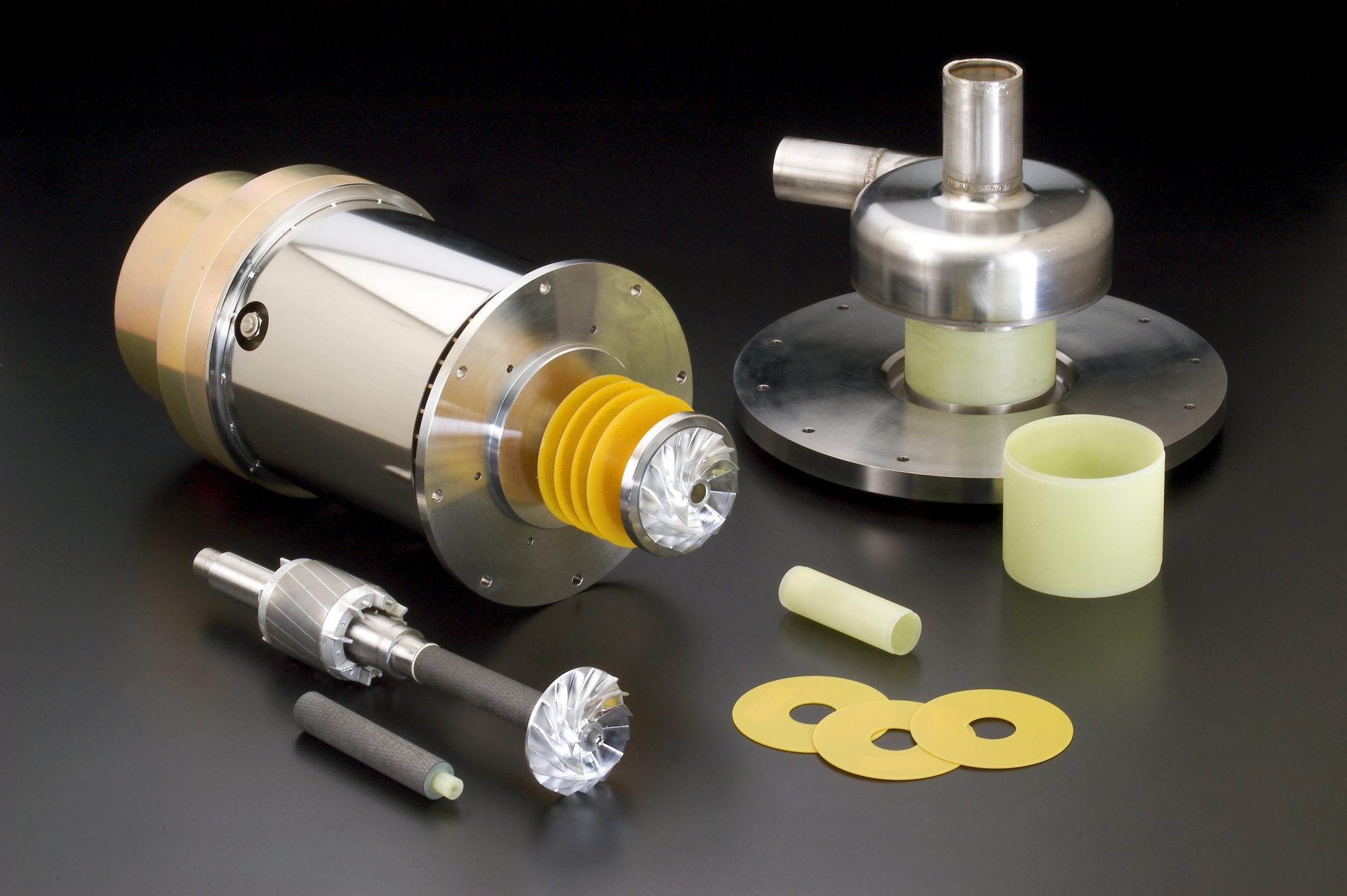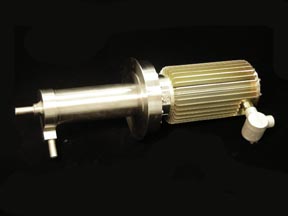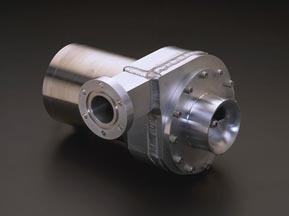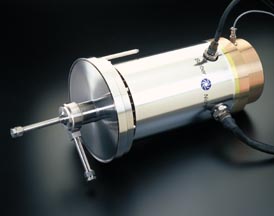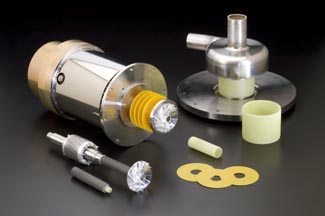It is critical that liquid hydrogen pumps are hermetically sealed and leak only very small trace amounts hydrogen to the outside environment. And because liquid hydrogen (LH2) temperatures are typically close to 20 K, it is also critical that heat input is minimized. Barber-Nichols’ LH2 pumps meet both of these critical requirements and more by incorporating the following features:
- No dynamic seals are used and the pump is hermetically sealed to meet the most stringent helium leak rate requirements.
- Anti-convection/radiation heat shields minimize heat input to the cryogenic fluid by disrupting natural convection currents and creating barriers to radiated heat.
- A long, thin-walled pump shaft and an outer vacuum housing minimize heat conduction into the cryogen.
- High-speed operation and the use of variable frequency drives increase hydraulic efficiency and minimizes generated heat.
- Vacuum housings allow pumps to be removed from a system for regular maintenance without breaking the cold box vacuum. This reduces time and preserves the system integrity during routine maintenance.


